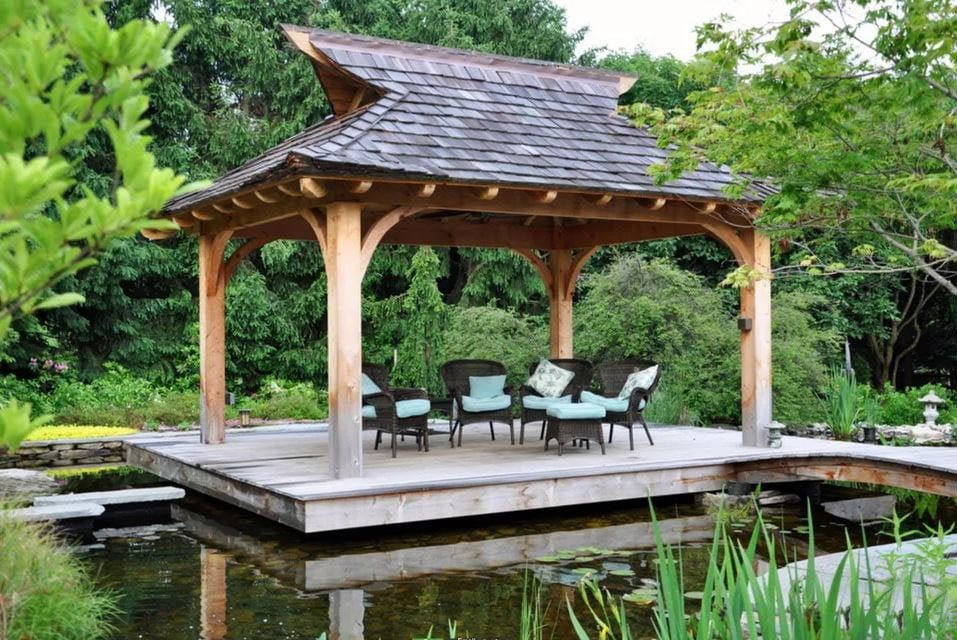
by Mark Bailey | Feb 17, 2016 | GardenLife Magazine

Winters (and summers) seem to be getting wetter, so if you’re fed up of not being able to use and enjoy your garden when it’s wet, check out our guide to the best design solutions that incorporate a patio, pergola or gazebo:
You don’t need us to remind you it’s been a wet winter. Even if you were lucky enough not to have your home affected by flooding or storms, your garden may well still bear the scars. Mostly in the form of mud and waterlogged paths and sodden lawns. So, given that we may get similar wet winters (and summers) in future years, we’ve put together some easy-to-manage garden design ideas that should take you through rain, more rain, and mud – whatever the season.
Look down, look up
Solution 1 is to think about what’s underfoot, using patios and paths to create dry areas whatever the weather. So, as soon as the rain stops, you can get outside without sinking into mud or grass-turned-bog.
Solution 2 is to think about what’s above, using pergolas, gazebos and other garden buildings to create some shelter from the rain. And, fingers crossed, they will also help you shelter from the overhead sun if there’s a good summer.
The beauty of both solutions – patios or gazebos – is that they can be relatively simple DIY projects.
Garden patio checklist
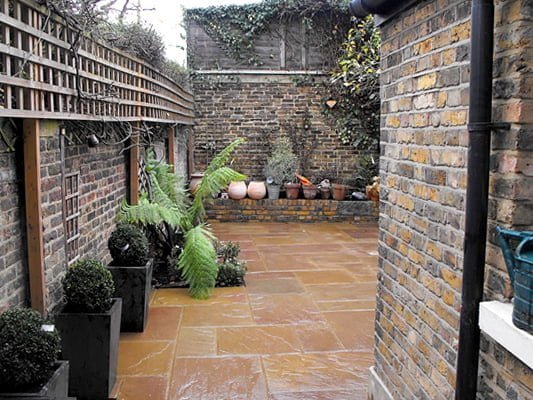
As well as providing a mud-free area, patios can add interest to a garden, and act as a focal point. And they don’t automatically have to be next to the house.
A few basic rules:
- A good strong base is crucial, with sand and gravel usually recommended
- How thick the base should be depends on the soil and drainage in your garden
- The patio should sit slightly above the surrounding area so water can drain off
- The patio shouldn’t be completely level and should be edged by gravel to allow heavy rain to quickly soak away
- When digging the base, stay well away from places where you know there are tree roots, or utilities cables and pipes
For some other useful tips, take a look at the DIY Network website.
Patio designs and patterns

More exciting than the practical dos and don’t s is choosing materials and patterns. On materials, you’ll find huge choices of new or recycled pavers at DIY stores and builders merchants. Recycled bricks and stones are an eco-friendly option – you can either re-use them as they are (though this will usually entail having colour variations) or buy new pavers made from recycled materials.
On patterns, there are five basic patterns: circular, herringbone, basket weave, European fan pattern, and running bond. Or for a more ambitious choice of patterns and layouts try Paving Expert, this has useful grids, which you can adapt for your own garden on graph or squared paper.
If you do want to build your own patio as a spring project, there are hundreds of websites and YouTube videos giving step-by-step instructions. If you want to take your patio to the next level, then covering it with a pergola or wooden gazebo is the next step.
The patio pergola combination

Obviously, the best way to enjoy your garden during rain is to buy or build a cabin, workroom or summer house. But if that doesn’t fit your budget or garden design, a pergola can provide visual interest and weather shelter.
The idea of the pergola dates back to the Italian Renaissance, when people started to use wooden structures with crossbeams and climbing plants to create shade. Some were just focal points for the eye – a beautiful arch of plants at the entry to a garden. Others were more like a tunnel of shade – somewhere to stroll or sit away from the sun.
Whilst finding some shade may not be your immediate priority, a pergola could be a great spring DIY project that would perk up your garden design all year round. And the design style doesn’t have to be traditional – nowadays you’re as likely to find minimalist pergolas using modern materials.
There are some beautiful ideas for pergolas on the HGTV website; check out the wonderful outdoor reading room, with grass coming through the pavers.
The all in one solution: a self-build garden gazebo

A step up from wooden pergola is the garden gazebo; gazebos are typically built from timber and incorporate a pitched roof to ensure the occupants remain dry even when it’s pouring. Gazebos range from simple square shape designs to more unusual octagonal bandstand-style gazebos, and other gazebos feature window proofing too (protecting you from the prevailing winds whilst remaining light and airy.
Gazebos typically feature a wooden decking area, an alternative to patio pavers which aren’t everyone’s cup of tea. However, a wood gazebo could easily be built over an existing paved patio, or fixed onto decking.
If you don’t want the hassle of designing and installing a patio decking then you could consider a wooden gazebo designed for home install, as many of these come with timber flooring. Gazebos are handsome, affordable and easy-to-build, so if a DIY pergola sounds too much for you, buying a self-build gazebo might be the best option.
An added dimension
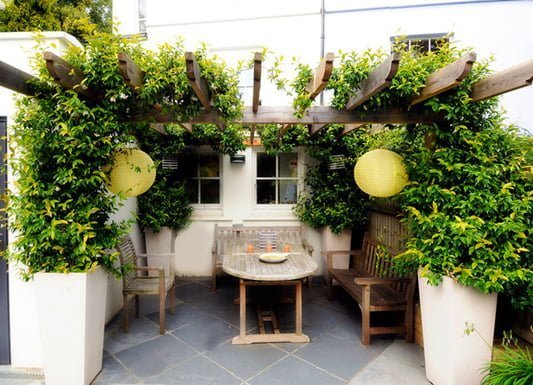
Finally, if you do want a plant-bedecked gazebo or pergola – whether traditional or modern in style – there are easy planting suggestions at Perfect Pergolas, including vines, clematis and honeysuckle. Jasmine is also a popular and fragrant option and there are ideas and recommendations for climbing roses for pergolas on the Royal Horticultural Society website.
Having planted them, you’ll need to persuade them to grow beautifully around your structure, for example, using pruning or training the stems to avoid the common problem of having bare stems lower down the gazebo.
Patio, pergola or gazebo?
Obviously it takes time to create a patio, pergola or gazebo – in particular growing plants, but with a self-build timber gazebo, you could easily have one in place for summer. If you have any questions about any of the GardenLife garden gazebos please don’t hesitate to get in touch.

by Mark Bailey | Jan 21, 2016 | GardenLife Magazine
Thinking of keeping chickens in your back garden?

Until a few years back, there were five ‘typical’ British family pets: dogs, cats, rabbits, guinea pigs and hamsters (in no particular order). But there now seems to be a sixth on the list: chickens. Keeping chickens is now a fairly common practice in suburbia, and the humble hen is a regular inhabitant of the UK’s back gardens. The benefit of keeping chickens is clear: not many other pets lay you an egg most mornings!
They also make friendly pets: there’s something very endearing about a free-range hen racing across the garden to greet you, with a level of enthusiasm that only a dog could equal. The clucking of contented hens also adds a new level of homeliness to a back garden.
Which henhouse is best for keeping chickens?
The rising popularity of back garden chicken-keeping has been fuelled by the growing range of henhouses on the market, in particular, the plastic ‘Eglus’, available in multiple colours from Omlet. The compact designs fit easily into even small-ish back gardens, need minimal maintenance, and are easy to clean (this is important for keeping the hens parasite-free). Prices start from £235.
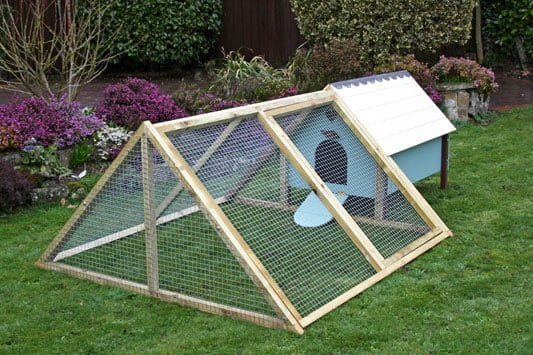
If you’re not a fan of brightly coloured plastic, and want a more traditional timber henhouse, the same buying principles apply as with any timber garden building. Look at the quality of:
- the timber – you want dense, robust, slow-grown softwood timber for extra insulation and longevity (or if the budget allows, hardwood)
- timber treatment – ensure that the timber is treated with a pet friendly wood preserver to enhance its lifespan
- the fittings – you want them to be solid and rustproof
- the construction – look for pressure-treated foundation joists, a strong build and a good-quality roof
You should also pay attention to ventilation: chickens are vulnerable to respiratory problems, and ammonia can build up from their droppings.
How much space do I need for keeping chickens?
According to PoultryKeeper.com (a great source of advice for would-be hen owners), each chicken should have a minimum of 1 sq metre in the run, though 2 sq m per bird is preferable. If space in your garden is limited, it’s possible to buy high-rise runs, such as Omlet’s Eglu Go Up coop, where the run is underneath the henhouse.
Keeping chickens in a back garden; do I need permission?
In the UK, you do not generally need permission unless you want to keep 50 or more chickens (in which case, you need permission from Defra – the Department for Environment, Food and Rural Affairs). However, you may be subject to byelaws, lease conditions or the deeds to your house preventing you from keeping chickens, and there are rules that may apply to back-garden poultry keepers. Interesting, laws relating to livestock also apply to chickens, and there have been instances where local councils have been involved in cases with ‘nuisance’ hens (more on that below).
In the first instance you should always also consult neighbours. Chickens can be noisy (eg when laying eggs, or when keen to be let out of their henhouse on light early mornings); smelly, if their henhouse is not cleaned weekly; and damaging to neighbouring gardens if they repeatedly escape. If you have neighbours who are proud of their immaculate garden they will be far from happy if they see escaped hens digging up their meticulously planted flower beds!

If your hens do regularly escape it will be your responsibility to stop this from happening, and you can do this quite simply by running chicken wire or plastic trellis around the bottom of your fence or hedge. If your hens are able to fly over boundary fences then you can clip their wings, keeping them on terra firma. It really is worth doing both of these things as persistent damage to a neighbours gardenscan quickly turn even the best of relationships sour. In an article on problem chickens David Fleming (head of the property litigation department at William Heath & Co.) outlined that under the Animals Act 1971 that people who keep chickens in suburbia are liable for “damage caused by trespassing ‘livestock'”. If things turn nasty between neighbours action can be taken by way of the Council Environmental Health Officer, and chicken owners are liable for damage caused by escaping chickens (as well as costs incurred).
If you’re thinking of keeping chickens in your own back garden then you really need to check with your neighbours first, and also ensure that your hens cannot escape. Many of the other associated problems can be minimised – for example, there’s good advice on reducing noise in this PDF. The occasional gift of freshly-laid eggs can also keep neighbours well disposed towards the hens.
How many chickens should I buy?
Chickens are gregarious birds and need company. Common advice is to buy three – this means that if one dies (and, sadly, chickens are vulnerable to a range of problems, from respiratory problems to foxes), you are not left with a depressed, lonely hen. Also, if you intend to buy young chicks it’s best to do so in summer; young chicks can’t cope with cold and can be killed if the temperature drops too low at night (for instance, if there’s an unexpected frost late in spring).
Should I buy a cockerel?
No! In case there’s any confusion about that, no! Unless you live in the middle of nowhere, have no neighbours and intend to breed chickens, then there is no need to buy a cockerel. Hens are perfectly happy without a cockerel, and cockerels don’t lay eggs but they do consume just as much feed (which will push your maintenance expenses up).

In summer, when days are longer, cockerels can crow from as early as three in morning and they won’t stop until midnight (and treble glazing and ear plugs aren’t enough to block out the sound from some birds)! Keeping a cockerel in suburbia is the fastest way to lose friends and alienate people (not to mention the threat of visits from the Council about noise pollution and possible legal action from sleepless neighbours).
Where can I buy chickens?
Forums and advice boards on sites such as Omlet and PoultryKeeper.com should have details about where you can buy hens locally. Generally, look for birds with clean eyes; and an upper and lower beak that meet in the middle. Signs of poor health may include lots of muck on the feathers around the vent; or raised scales (eg sticking out at 90 degrees) on the legs and feet.
Will chickens ruin my garden?
More than likely! Chickens do scratch up the ground with their feet, meaning they can quickly reduce the grass in their run to a dust bowl or bog (depending on the weather), and they can leave droppings on paths, patios and decking areas if they are allowed out of the pen.
If your hens are free-range, you will find they have a particular affection for scratching around in window boxes, posts, containers and newly-planted beds (and they can easily dig up flowers you have just carefully planted). Stones at the base of plants or in pots can help to prevent this, however some hens will gleefully dig up slate and gravel paths in search for worms (spreading stones everywhere).

They may also lay waste to your vegetable patch (unless you fence it off), so although you will have lovely fresh eggs to cook with, your veg may not look up to its usual standard. You can read about which plants chickens eat, or will avoid. Ultimately, if you don’t want your hens to make a mess of your nice tidy garden they will need to be penned in.
Where should I position the henhouse and run?
Chickens can overheat easily, so need the option of shade. But they also seem to enjoy sunbathing, so a mix of sun and shade is ideal. Some poultry keeping websites advise putting the run against a garden wall, as it provides the chickens with shelter and a sense of security. The ground around the run should be even – both chickens and foxes are expert at finding their way underneath chicken wire.
Other than that, it is a question of garden design and individual preference – whether you prefer to have the chickens somewhere you can see them out of the windows or from a patio, or more hidden away from sight.

Whatever you decide to do, when it comes to keeping chickens always check with neighbours first, and if you plan to allow your chickens to roam free-range, ensure that the boundary of your garden is secure. You can then sit back and enjoy the company of a loving pet whilst tucking into a delicious, fresh, free-range egg!

by Mark Bailey | Dec 16, 2015 | GardenLife Magazine
Conservatory versus summer house? Here’s our quick run down of the pros and cons followed by some detailed and important pointers:
Pros & Cons | Conservatory | Summer house |
Self install available?
| No | Yes |
| Planning permission required? | Possibly, check local laws | Possibly, but not normally if the roof height is under 2.5m |
| Cost per square foot? | High, on average £200 per sqr foot | Low, £20 – £50 per sqr foot |
Location options?
| Fixed to the house | Anywhere in the garden |
| Direction faced? | South | Any direction |
| Added house value? | Yes | Yes |
| Sustainability options? | Timber models only | Yes |
| Maintenance required? | Occasional cleaning with occasional timber treatment on wood framed models | Occasional timber treatment |
1. What’s the difference between a conservatory, sunroom and summer house?

Conservatories are generally glass (or polycarbonate) rooms attached to a house. A key detail is that the roof is made from glass/polycarbonate, meaning that the sun shines straight into the room. Conservatories can come in different styles, from simple lean-to affairs to large bespoke orangeries. ConservatoryDesigns.co.uk has a good guide to different styles, helping you tell your gull wing from your P-shape.
Then there’s a sunroom, also sometimes referred to as a sun lounge or a garden room. This is also attached to the house, but has a solid roof, offering more protection from overhead sun and heat loss.
And then there are summer houses, and other garden buildings, such as garden offices. These may also be referred to as garden rooms, and can range from a simple timber pavilion to a fully-insulated multi-roomed home office.
2. The pros and the cons of a conservatory
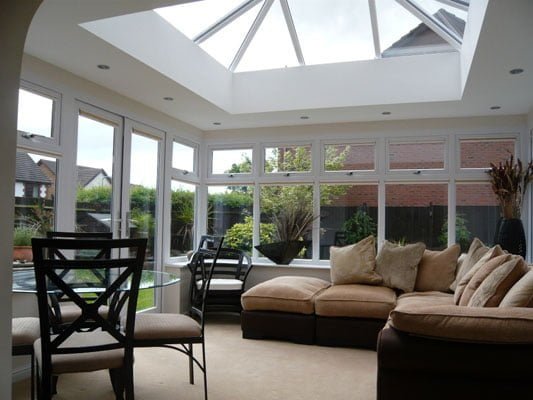
The great benefit of a conservatory or sunroom is that you don’t have to leave the house to get there. Good news during showery weather. And because they are attached to the house, they minimize the space you have to give up in the garden.
However, both conservatories and sunrooms come with less desirable baggage. The anti-conservatory lobby say that a south-facing conservatory is too hot to step into for half the year. But a north-facing version, whilst perfect in summer, may feel Arctic in winter. The pro-conservatory lobby will say blinds and ventilation can tackle the former problems, and insulation and heating the latter. True enough, but these measures can add to the expense, sometimes considerably.
You are also limited in how you position the conservatory, especially if you live in a terraced home or have limited space at the side of the house. If the back of your house faces south, then so must your sunroom.
Lastly, many people find that in adding a conservatory, they ‘lose’ the room it is attached to. A room previously used as a dining or sitting room or a study may now seem more like a corridor on the way to the garden room. These are the main pros and the cons of a conservatory, however good design can mitigate against some of them (but this might require a more expensive bespoke solution).
3. Summer houses – the best alternative to a conservatory?
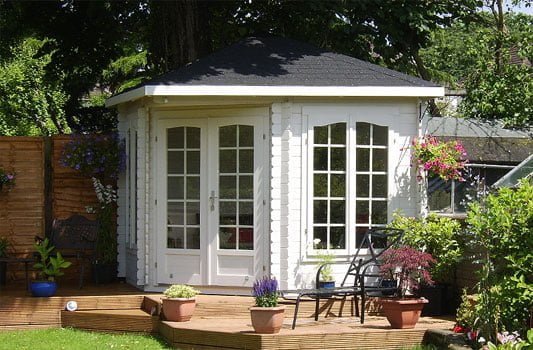
In contrast to conservatories, summer houses and garden rooms can be oriented any way you wish: for example, a sun room at the bottom of a south-facing garden could have the main doors and windows facing north. And corner summerhouses can be just as space-efficient in a small garden as a conservatory.
And if the 180-degree garden views available in a conservatory attached to the back of a house are insufficient for you, there are summer houses with 360-degree views (which simply can’t be replicated with a conservatory).
Secondly, free standing timber summer houses can offer more space for possessions as well as people. You could devote a corner of your new conservatory to lawnmowers, tools and bikes, but let’s just say the aesthetic appeal might be diminished. Of course, this would apply equally with a beautiful new summer house – hence the appeal of a garden room with a separate secure storage area (so you can keep your messy garden tools separate to your living space).
Ultimately, if you really like the idea of a sunroom extension but the cost and limited floor space is putting you off, a summer house is probably the best alternative to a conservatory.
4. Conservatory versus summer house – the questions to ask
There’s no right answer to the conservatory versus summer house debate. But whatever you buy, the important thing is to choose a style that will be spacious enough, warm enough, cool enough, robust enough, and loved enough by you and your family.
Here are some points to look for when trying to ensure those things:
- Look at the quality of materials used – for example, thicker, denser timber offers greater insulation, as do double-glazed windows.
- Think about ventilation – are there enough doors and windows to let in air if you want it, and are there tilt-turn windows to add flexibility?
- What flooring, insulation and security options are available?
- Think about how much of your garden will be taken up by the structure and mark out the area to understand the impact on the garden. Will it be too small or too big?
- Following on from the above, consider the overall internal floor space (which will be smaller than the building footprint). Will the conservatory or summer house be large enough to accommodate your furniture or hobbies? Again, marking out actual sizes on the ground can help.
If you’re inclined towards the conservatory route, there’s a good buying guide on the Telegraph website. And if you want to know what to look for when buying a summer house check out our buyer’s guide to timber garden buildings.
5. The practical part: price and planning permission
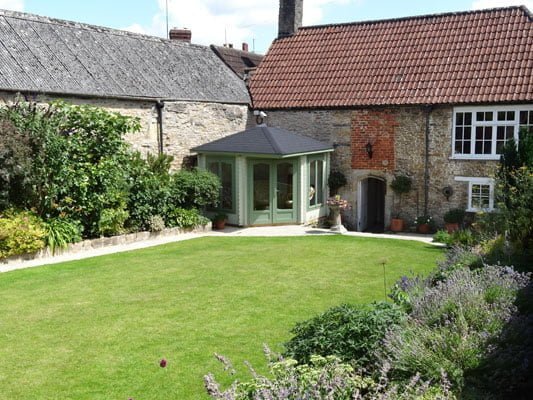
How much a conservatory or summer house costs is a difficult one because of the vast range of styles, sizes and designs. A common answer with conservatories is from £5,000 to £30,000, but with bespoke versions the upper limit will be higher. And the design details that make a conservatory practical and liveable – from double-glazing, to ventilation and underfloor heating can bring up the price considerably. Ultimately, adding a conservatory is the most expensive form of extension costing around £200 per sq foot.
With garden rooms, there is also a wide range of prices, depending on the spec chosen – from summer-only pavilion to year-round business HQ or accommodation – but it is usually easier to tell in advance how much the costs are because they are all-inclusive (including the building itself, roofing materials, accessories, delivery and installation, if required). They should also offer a much lower starting price – there are good quality summer houses starting from £1000 and well built summer houses should only cost £20 – £50 per sq foot (including ground work, foundations, roofing and installation, if required).
Finally, there is the issue of whether planning permission is required. With both conservatories and garden buildings, the answer is maybe. It will depend on their size, height, distance from the boundaries of your property, whether they contain sleeping accommodation, and so on. The rules differ slightly in England and Scotland, and also in certain conservation areas. Best thing is to check with your local council or check our guide to planning permission for summer houses.
Lastly, if you’re installing a conservatory or summer house to help add value to your home, remember it will only make your home more desirable and saleable if it is of high quality and well maintained (no one wants to buy a house with a damp draughty conservatory or dilapidated summer house that’s full of junk).

by Mark Bailey | Nov 3, 2015 | GardenLife Magazine
Whether you’re a total garden novice intending to grow some container plants, or you’re 30 years into a passion for horticulture, there are thousands of gardening websites and blogs to guide and/or inspire you. And that’s the problem – there are just too many to choose from. So, if you’re looking for growing tips for a shady vegetable patch or want the latest ideas in contemporary garden design, here are the best gardening websites to bookmark.
1. No surprises for first place

The source of all knowledge about gardening in Britain is the mighty – and very user-friendly – Royal Horticultural Society website. We could go on for pages about the different sources of advice on the site, but here are just a few pointers:
The RHS Beginners Guide really does introduce you to the basics, beginning with how to sow seeds, or advice on what containers to use. Also good for both novices and old-handers is the gardening calendar section, giving you advice about what to do each month.
Widely loved in gardening circles is the RHS Plant Finder, one of the seven wonders of the horticultural world. You fill in a few boxes about, for example, the soil type, amount of sun/shade and moisture in your garden, plus what colour and height of plants you want, and it produces instant plant recommendations. Not only that but it tells you how to grow the plants in question, and even where to buy them.
2. Going organic?

Fennel & Fern describe themselves as “a big happy team of organic gardeners who love the soil under our fingernails and munching on our own homegrown veg” and it’s one of the best blogs that GardenLife Log Cabins have come across; beautifully curated, but definitely practical. The main blog is updated each day with new posts; and you can follow the progress of their ‘dream garden’. There are guides for growing vegetables, regular recipes, and beginners’ tutorials.
Also worth looking at is their Garden Grab site which showcases gardening blogs from around the world. This could also be a channel for promoting your own gardening blog if you have one.
In short, Fennel & Fern are a class act who avoid the common pitfalls of many gardening websites: being too intimidating, too focused on selling, or too home-made.
3. Archived but not forgotten

The BBC gardening website will already be familiar to many, but it’s popular for a reason. It has similar features to the RHS site – plant finders, guides on what to do each month, tutorials, and a slightly intimidating series of factsheets on pests and diseases (by the time you’ve looked at a couple of these, you’ll wonder how any plant ever manages to grow).
Although the site has been scaled back in recent years, and blogs and message boards are no longer updated, they are still archived on the site, so there is plentiful material. This includes a great guide to gardening with children with some good activity ideas such as building a wormery, making an indoor cactus garden, or growing a child’s initial on the lawn. Although archived, the BBC gardening website has to be included in anyone’s list of best gardening websites.
4. One-stop-shop for anything you might ever want in a garden

The Gardening Website is a selling website, rather than a how-to website like the BBC and RHS. Some people aren’t taken with its scale and design, but it’s certainly comprehensive. If you’re looking for a specialised dandelion spade, a wide selection of rotavators, or a directory of landscapers or garden designers in your area, this site will take you to where you can find one.
5. One for the indoor gardener

No, not the person who has a house full of container plans, but the person who wants to sit comfortably inside fantasising about their dream garden.
Garden Design is a gardening magazine with copious ideas for, and photos of, gardens around the world, especially the US. It’s the stuff of daydreams, but not hopelessly impractical. Alongside tips on gardening fashion, there are good ideas for small or cramped gardens, and suggestions for achieving Luxe for Less.
Garden Design is certainly not the only website with good inspirational photos – we frequently recommend Pinterest and Houzz.com on this website.
6. An antidote to designer gardening

The Real Men Sow blog is far from comprehensive but very likeable, and that’s why we’ve included it in our list of best gardening websites. It’s written by a Norwich City supporter called Jono, who had an allotment in Burnham-on-Crouch for five years and is now creating ‘A Patch from Scratch’ in an overgrown back garden.
Jono started out as a complete novice, and was reliant on advice from his mum Jan (about whom there are a couple of lovely blog posts).
A few years later, Jono clearly knows quite a lot about gardening, but he’s kept the cheery, amateur tone of voice. It’s a great place for real-world advice, such as tips on how to dig, or where to get free seeds, and there’s an Excel spreadsheet on how much money Jono saved by growing his own fruit and veg.
7. And now it’s time to get outdoors

Finally, what better way to generate some gardening inspiration than to get up off the sofa and visit some real-life beautiful gardens? The National Garden Scheme opens gardens – many of them privately-owned – for charity, and it has donated over £45 million to nursing and caring charities since it was founded in the 1920s.
The website is quick and simple to use: you put in your location, and whether you want to visit a garden today, this weekend, within the next 7 or 28 days or on a specific date, and it will tell you which gardens are open to the public. A great way to get gardening ideas and do some good at the same time.
Hopefully this run down of GardenLife Log Cabin‘s seven best gardening websites will arm you with everything you need to enjoy each aspect of your own garden throughout the year.
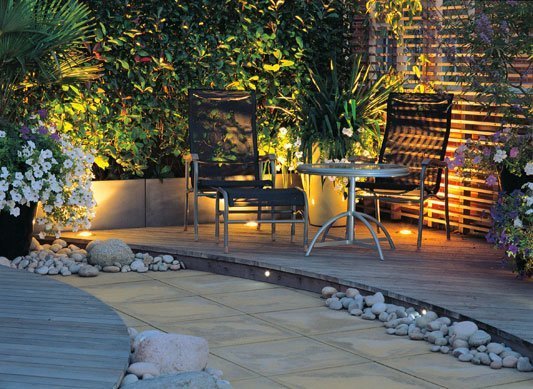
by Mark Bailey | Oct 8, 2015 | GardenLife Magazine

The 21st-century trend for using our gardens as extra living spaces has illuminated people’s interest in garden lighting. Traditionally outdoor lighting was simple and practical: security lights and lighting for paths. Now the choice is endless: eco lights, uplighters, downlighters, wall lights, ground lights, free-standing lights, decking lights, table lights, parasol lights, lanterns, party lights and Christmas lights. There’s a choice of rechargeable solar powered, traditional battery operated and mains connected, as well as low wattage LEDs (light-emitting diodes), energy-efficient bulbs and high wattage halogen bulbs.
Some of this is self-explanatory, but with all the options and considerations, what are the best options available when it comes to garden lighting?
Alternative garden wall lights
Outdoor wall lights can take different forms. There are ornamental lamps, ranging from olde-worlde lanterns that look like they come from an old coaching inn, to steel industrial-chic lights. We’ve had a good look around the web and considered some quaint decorative lights, but our favourite outdoor wall light is this industrial lamp made from galvanised steel – it would look great on a stone or brick wall, or even a contemporary timber garden building.

Outdoor downlighting versus uplighting
When it comes to downlighting versus uplighting the location dictates the choice. Wall-mounted downlighters can be used to spotlight specific areas of your garden or cast light over a wider area, similar to what you would see in a kitchen or bathroom. Uplighters can also be used to highlight a particular feature, from a statue to a tree. They can be recessed and permanently mounted, or freestanding: spike lights are moveable lights that can be ‘planted’ in a flowerbed to highlight a specific plant. An alternative to highlighting the plant itself is to use lighting to throw a shadow onto a wall behind it. Clearly, this works better if the plant has an interesting silhouette.
Our choice of garden wall light is this minimalist light that works as both an uplighter and a downligher, offering the best of both worlds.
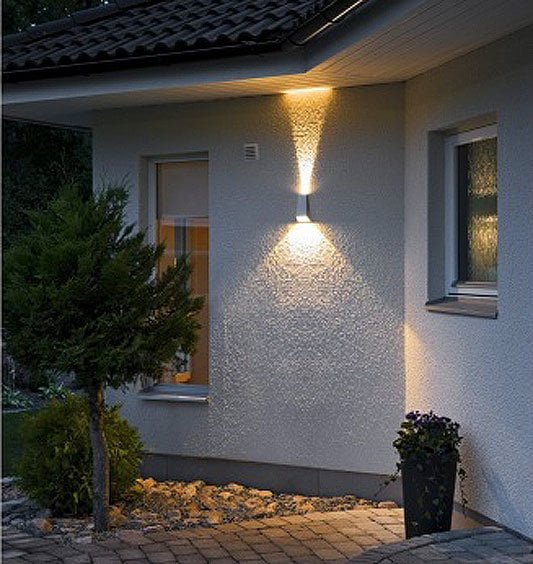
Unusual decorative garden lights
Once you start to think about highlighting particular plants or features you enter the realm of decorative garden lighting design, and there are some highly unusual options. As well as using lights to create focal points in a garden, you can use it to create even more visual interest. For example, many websites now sell underwater lighting – using it to provide mirror, colour or refraction effects around a pond, fountain or swimming pool, or to uplight plants or walls from underwater (which can cast upward shadows of ripples). If you have a pond and you really want a unique lighting experience in your garden, then you must try this efficient LED underwater light.
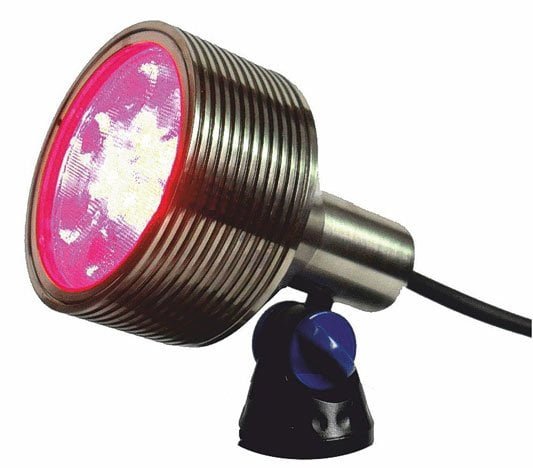
Coloured ornamental garden lighting
The possibilities for adding night-time colour to your garden have also burgeoned. How about a decorative hanging crystal ball light that turns on automatically at dusk and changes colour through purple, violet, blue, turquoise, green, orange, red and pink? Our favourite is more ethereal, a ‘Murano glass garden globe’ which is available in different colours. It’s a striking design and stands on a thin steel post that you stick in a flower bed (in the dark it appears to hang in the air).

Playing around with shaped outdoor lights
If you have a spare £800 to spend on just one light, how about pine-tree inspired garden lights which can sit on grass, concrete or any other garden surface and stand an imposing 80 or 150cm tall? They would make a dramatic difference to any garden border, path or driveway (as well as your bank balance). In this category we’ve opted for a slightly more affordable design from John Lewis. We really like this cube light, which is seat by day, and red/green/white/blue glowing cube by night.

Solar powered garden lighting
Regardless of light design or type, you need to decide on wired, solar or battery-operated (the latter is probably only suitable if you’re planning one-off or occasional lighting displays). Solar panels can be integrated into the actual light, or located on a separate panel that is joined to the light by a cable. The former are more flexible in terms of positioning and moving them around; the latter may provide more hours of light.
One question to ask yourself fairly early on with solar-powered lights is whether you will want to use them in winter – a couple of hours of January sunlight will likely mean the ornamental solar night lights you bought are drained by only five o’clock in the evening. Rather than selecting a favourite design of solar powered garden lights, we’ve instead picked out The Solar Centre as the best option, as they sell a range of lights specifically designed to work in winter as well as summer.

When browsing the web and considering the endless possibilities for your very own garden lighting design you might want to consider a few practicalities:
- Don’t use decorative ornamental indoor lights outdoors, however weatherproof they may appear (and “splash proof” doesn’t mean “watertight”).
- Look for durable weatherproof fittings – among the top-of-the-range makes widely recommended by garden designers are Hunza lights (though they aren’t the cheapest they are designed to last).
- Although LED lights are long-lasting and durable, they still don’t last for ever outdoors. Many garden lights on the market don’t have replaceable bulbs, so once the bulb goes dark, so does your lighting.
- Following on from the above, always check that rechargeable batteries are actually changeable. Rechargeable batteries can lose the ability to recharge and sometimes need to be replaced – if you buy solar powered lights make sure you can get into the battery compartment (unfortunately some lights have impenetrable innards).
- LED lights are small, convenient, energy-efficient and long-lasting but they mostly provide directional light, rather than 360-degree illumination. This makes them more suitable for decorative lighting or spotlighting rather than security coverage. If you do want outdoor LED security lights, you might want to increase the number of lights you buy to ensure your property is effectively lit up.
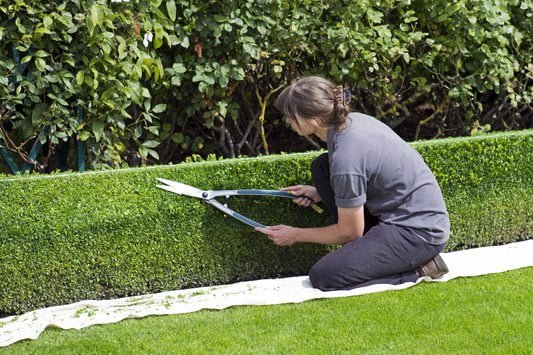
by Mark Bailey | Aug 24, 2015 | GardenLife Magazine, How to guide

Complaints about the weather are an essential part of the British summer, and in August the post-mortems begin – too much rain, not enough rain, too much wind, and so on. But if your main complaint is wind blighting your summer, spare a thought for your garden. It probably suffered far more from than the wind than you did.
As well as wreaking physical damage, wind causes moisture loss from plants; carries salt from the sea; kills buds and blossom; delays germination and growth and that’s just the start. Given all this – not just the garden damage but also the windswept summer lunches, the blown-over patio pots – it may be a good idea to create a windbreak in your garden. So when it comes to creating a garden windbreak, here are our top tips:
1. Natural wind breaks versus artificial wind breaks
Natural windbreaks include hedges, shrubs or trees, planted in single rows or in three or four staggered rows (for which you will clearly need a bigger space). Artificial versions include fences, walls and the like. The advantage of natural garden windbreaks is that they look more attractive and can be more effective (see point 2 below). The advantage of artificial ones is that you don’t have to wait for them to grow.
2. Let some air through to your garden
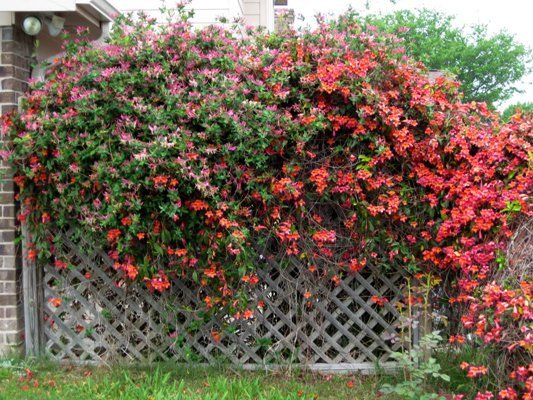
Counter-intuitively, the best windbreaks do not try to block wind completely: a semi-permeable windbreak can be more effective than a solid wall or fence. Basically, a solid wall can create eddies of wind and turbulence on its leeward side or even intensify the strength of wind at the wall ends. If you don’t want to look at a wall, and planting a hedge is too much long-term hassle, you could consider trellis with a mix of climbing plants such as ivy, virginia creeper or honeysuckle (of which there are evergreen varieties). The trellis honeysuckle combination is not only a good windbreak, it allows some air into your garden, and in summer your garden will be filled with the most beautiful scent from the flowers.
3. How much wind does a windbreak break?
According to the Royal Horticultural Society, a windbreak can reduce wind on its leeward side for a distance of ten times its height (though there are some more conservative estimates of about eight times height). This should help you plan how tall a windbreak you need, and where it should go.
4. Deciduous or evergreen windbreak?

There’s no right or wrong answer here. Evergreen garden plants are often fast-growing, and can provide wind cover all year around (and privacy, as they don’t drop their leaves). However, some garden experts warn they can become too dense, reducing their effectiveness (because they don’t let enough air through) and also restricting your light or views. A more useful approach is to consider both types, possibly mixing evergreen and deciduous plants together, or go for a mix of native hedging plants to help local wildlife (see point 5).
5. What plants are best for a natural windbreak?
The Royal Horticultural Society says the top five plants for a windbreak are:
- Elaeagnus × ebbingei
- Hawthorn (Crataegus monogyna)
- Italian alder (Alnus cordata)
- Sea buckthorn (Hippophae rhamnoides)
- Small-leafed lime (Tilia cordata)
And what about native hedging plants? If you want to encourage wildlife, birds and other animals to pay a visit to your garden a native windbreak hedge should consist of a mix of the following:
- Hawthorn
- Crab apple
- Field maple
- Hazel
- Beech
- Bird cherry
- Alder
- Holly
- Yew
6. Research your hedge choice carefully
The RHS lists are useful, but a little more investigation is necessary, based on your individual goals and garden. For example, hawthorn windbreaks support many insects and birds, making them wonderful for wildlife gardening. However, they can also harbour a disease called fireblight, which afflicts apple and pear trees – making them not so wonderful for an orchard.
If you do have apple and pear trees needing breeze protection, or even an entire orchard, alder may be your best solution. If you’ve got young kids, you might want to avoid Yew as all parts of it (except the flesh of the berries) are poisonous. It’s these little details about foliage or pests that can make all the difference between the perfect windbreak and the not-so-perfect version.
7. How to get your hedge started
A major drawback of growing a natural windbreak is the difficulties of getting started, especially since the wind will likely batter your young windbreak plants. One garden writer in Ireland talks of using two or three tiers of old tyres to protect her rugosa roses, and then old pallets, as they grew taller. Not pretty at the time, but it worked out well in the end.
Another suggestion is to have a temporary artificial windbreak while the plants grow – perhaps netting or willow hurdles.
8. Consider a fedge or living willow windbreak
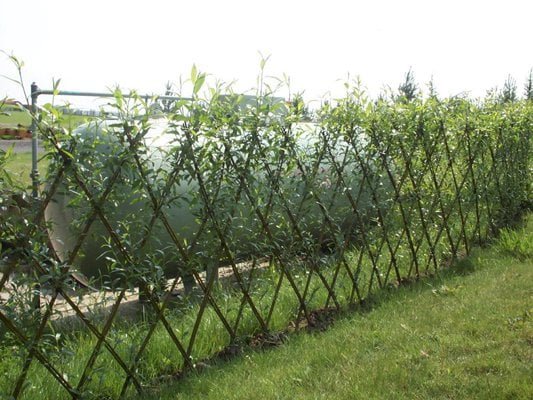
A fedge is somewhere between a fence and a hedge, created using two rows of living willow stems. Willow whips (the short willow stems) can be bought online in autumn and planted out straight away. When the willow whips arrive they just look like dead sticks, but there’s no need to worry, all you need to do is stick the end of each whip into the ground and nature will take its course (you don’t even need any compost or rooting powered to help stimulate root growth, they simply grow wherever you plant them). If you already have your own willow tree you don’t even need to buy willow whips – simply cut the most recent growth from the tree in late autumn and poke the cuttings into the ground where you want your fedge to grow (but please note, this technique does not work with weeping varieties).
Whether bought or cut from a tree, the whips can be tied together or, ideally, woven together to provide extra strength. To weave the whips place them roughly 10cm apart and plant them at 45 degrees to each other – for best results plant two rows. You can then effectively create your own living trellis by intertwining the whips along the length of the fedge. If you want a more robust fedge simply plant more rows of willow – they are very malleable so you can create all sorts of shapes, including archways and shelters.

Lastly, the other thing to consider, of course, is that a windbreak can also make your garden look better. Not just because your plants grow better, but because windbreaks can screen the ugly and add structure and interest to a garden design. All in all, they’re much to be recommended, as a way to improve both your garden and your summer lunches al fresco. Why not get one started in time for next summer?



















































